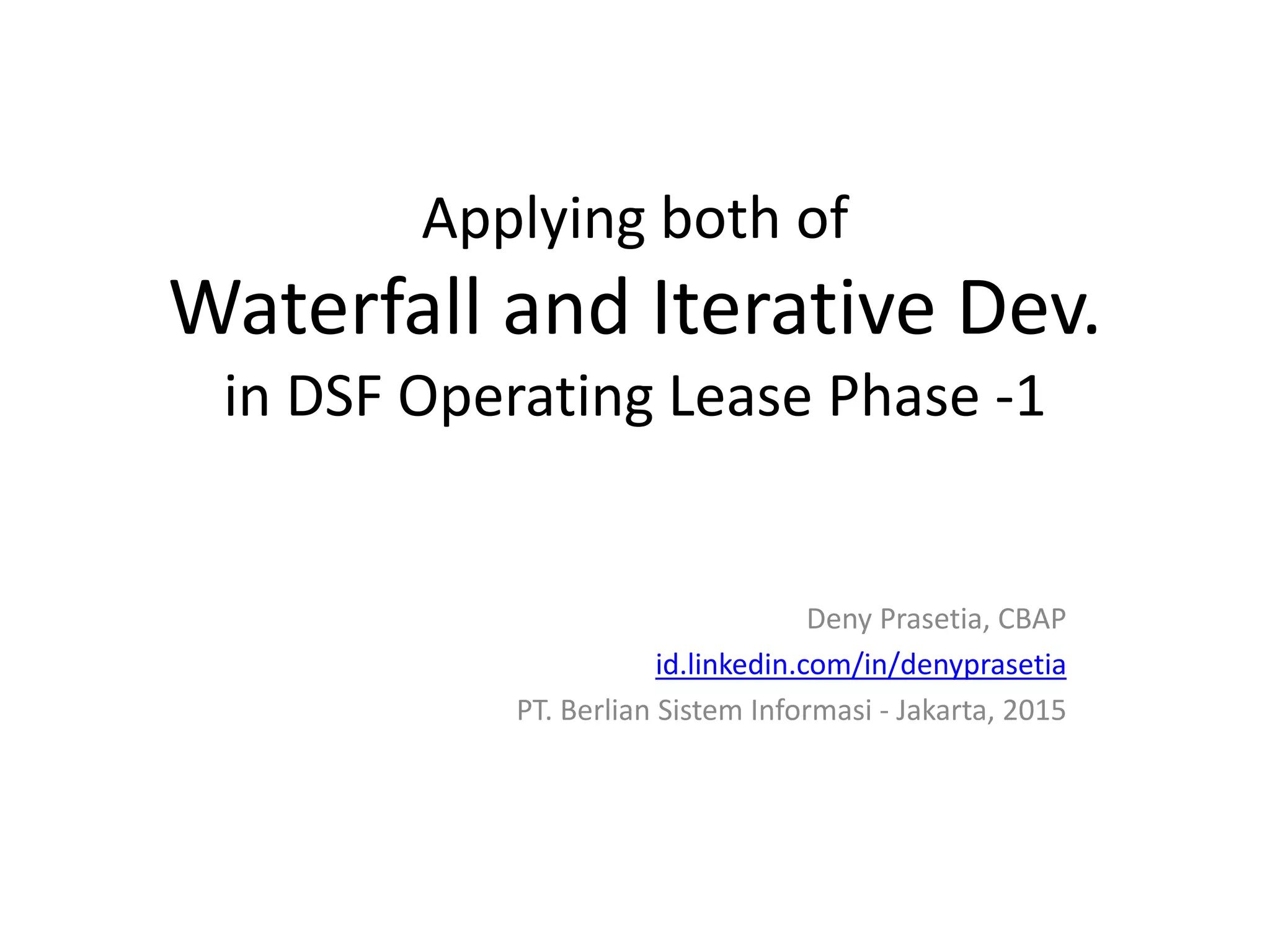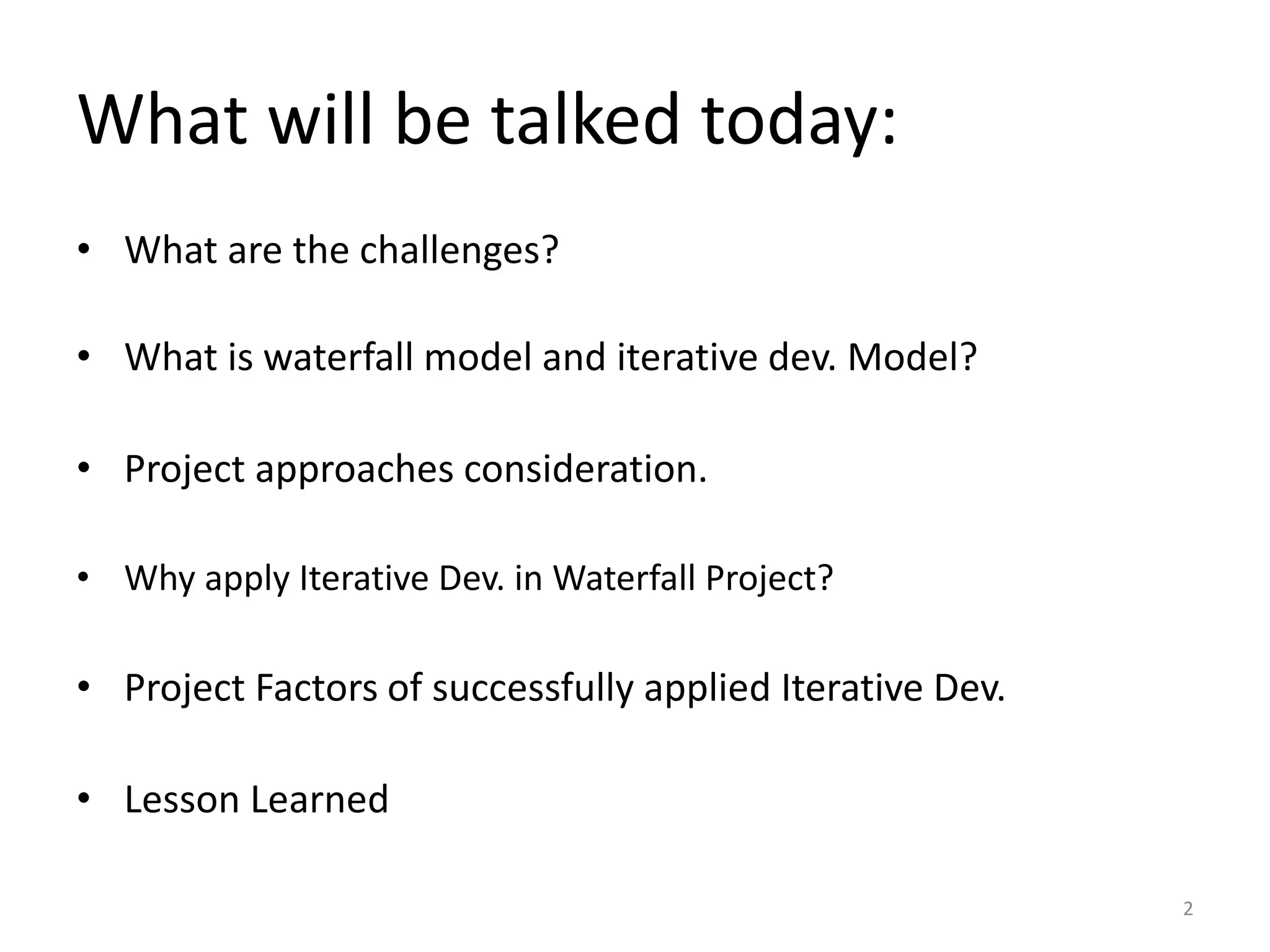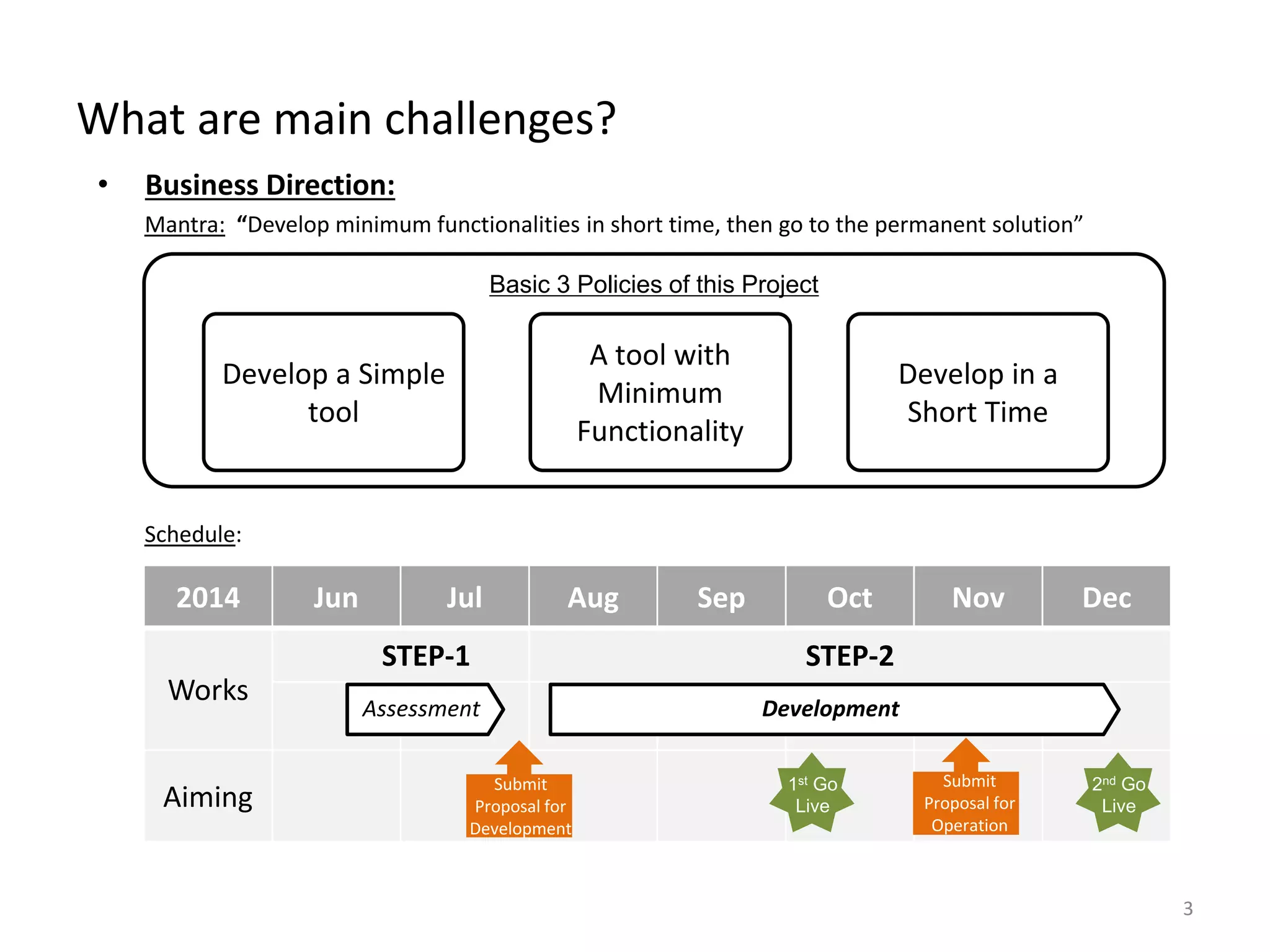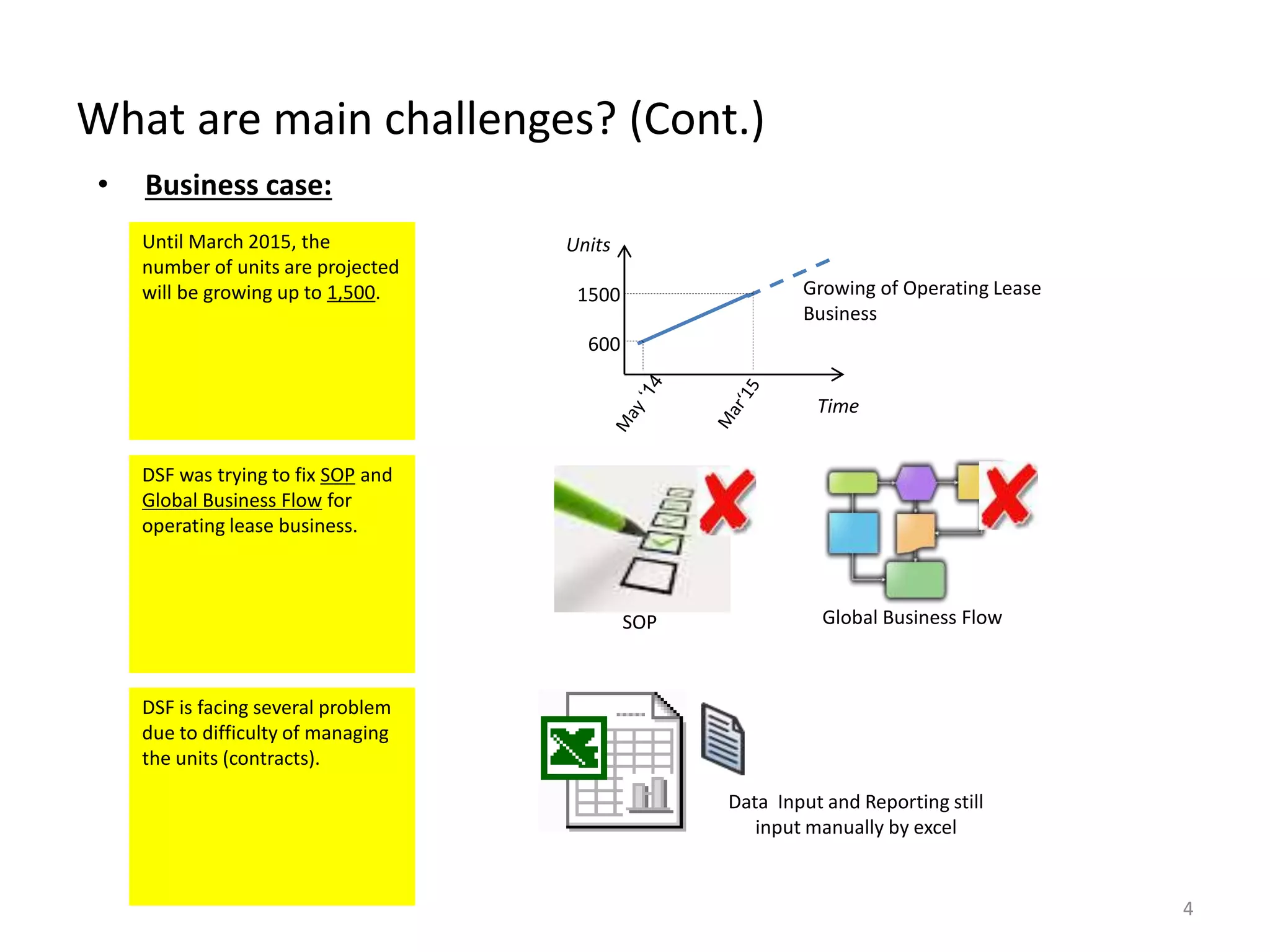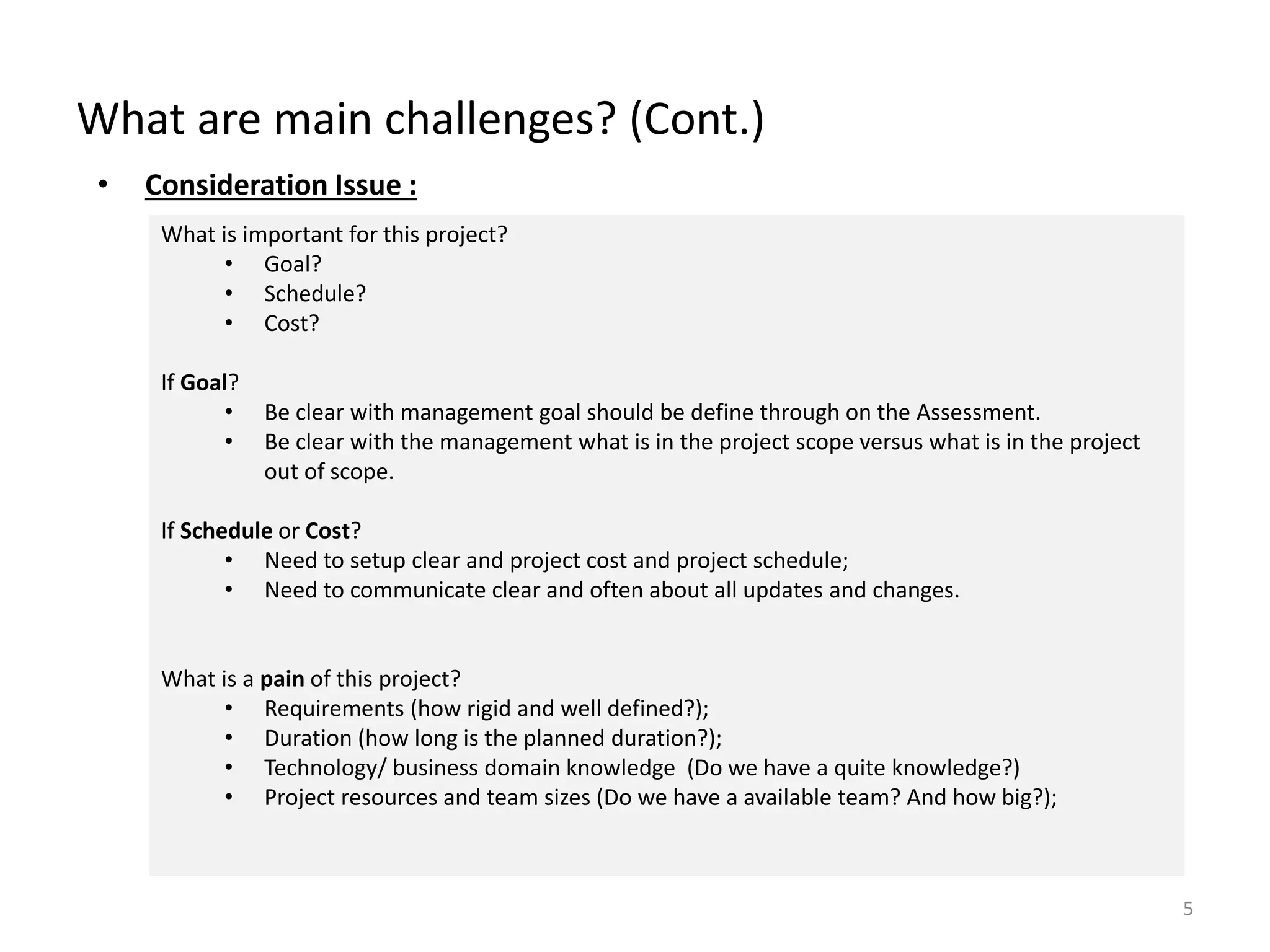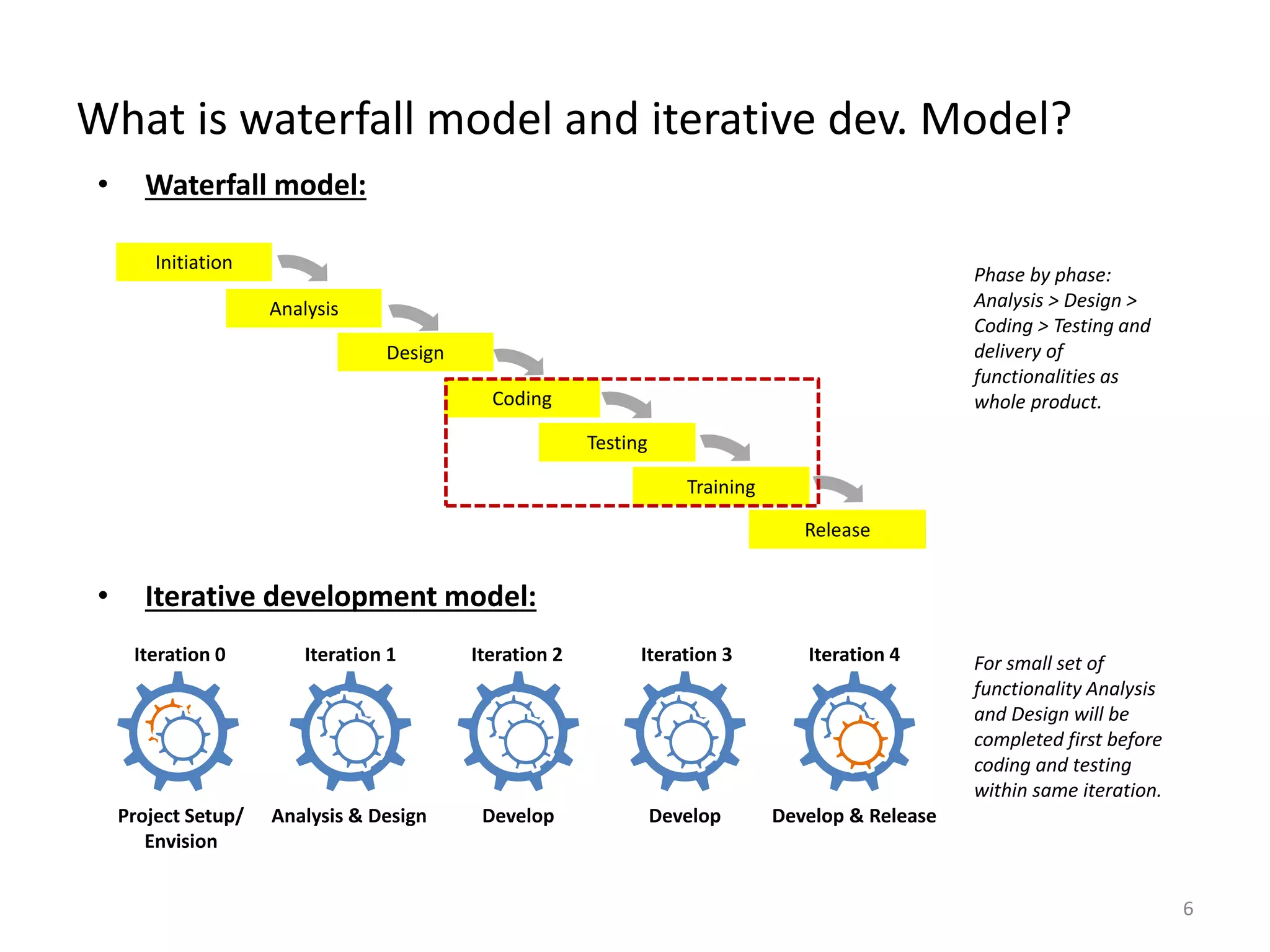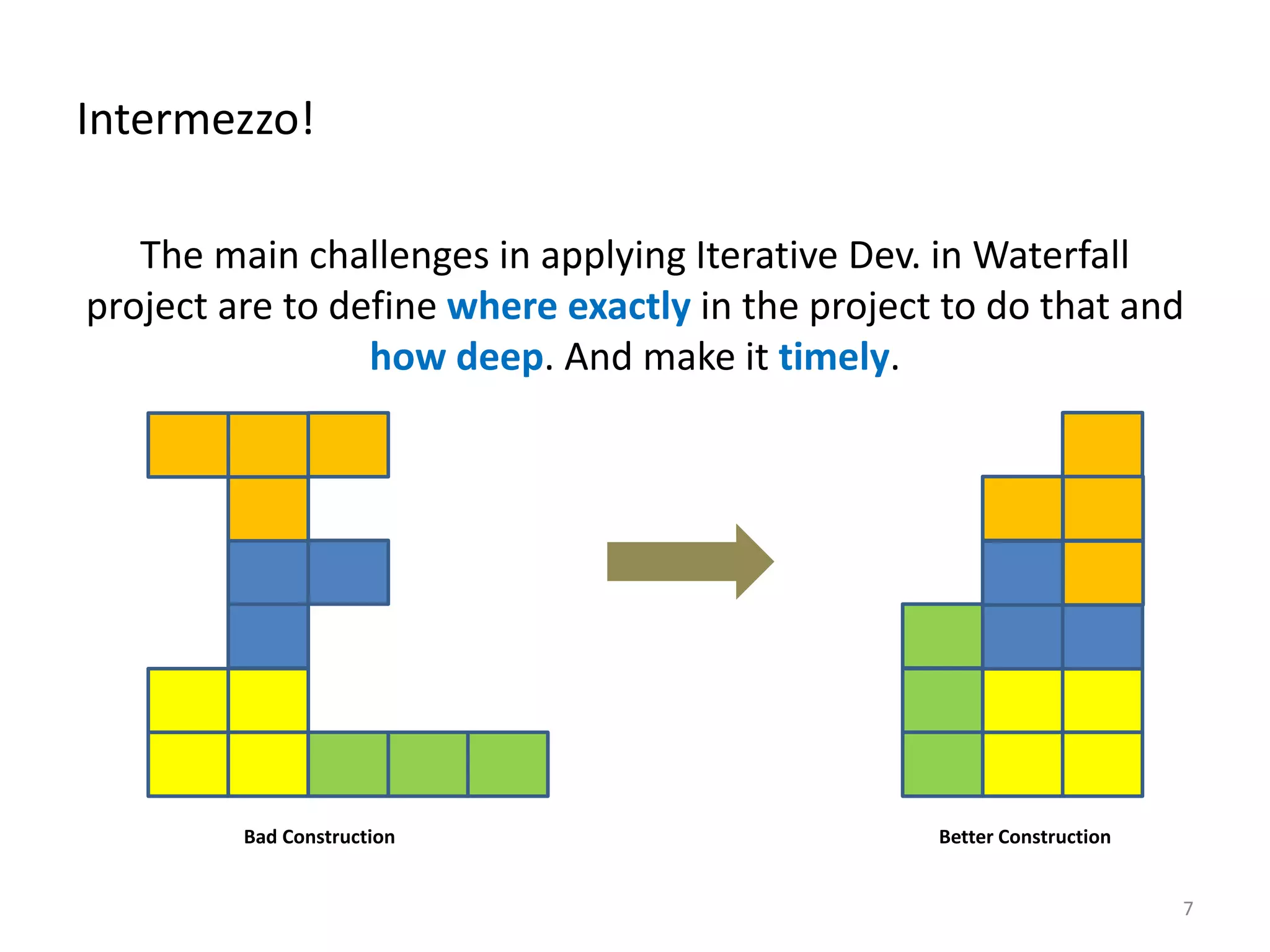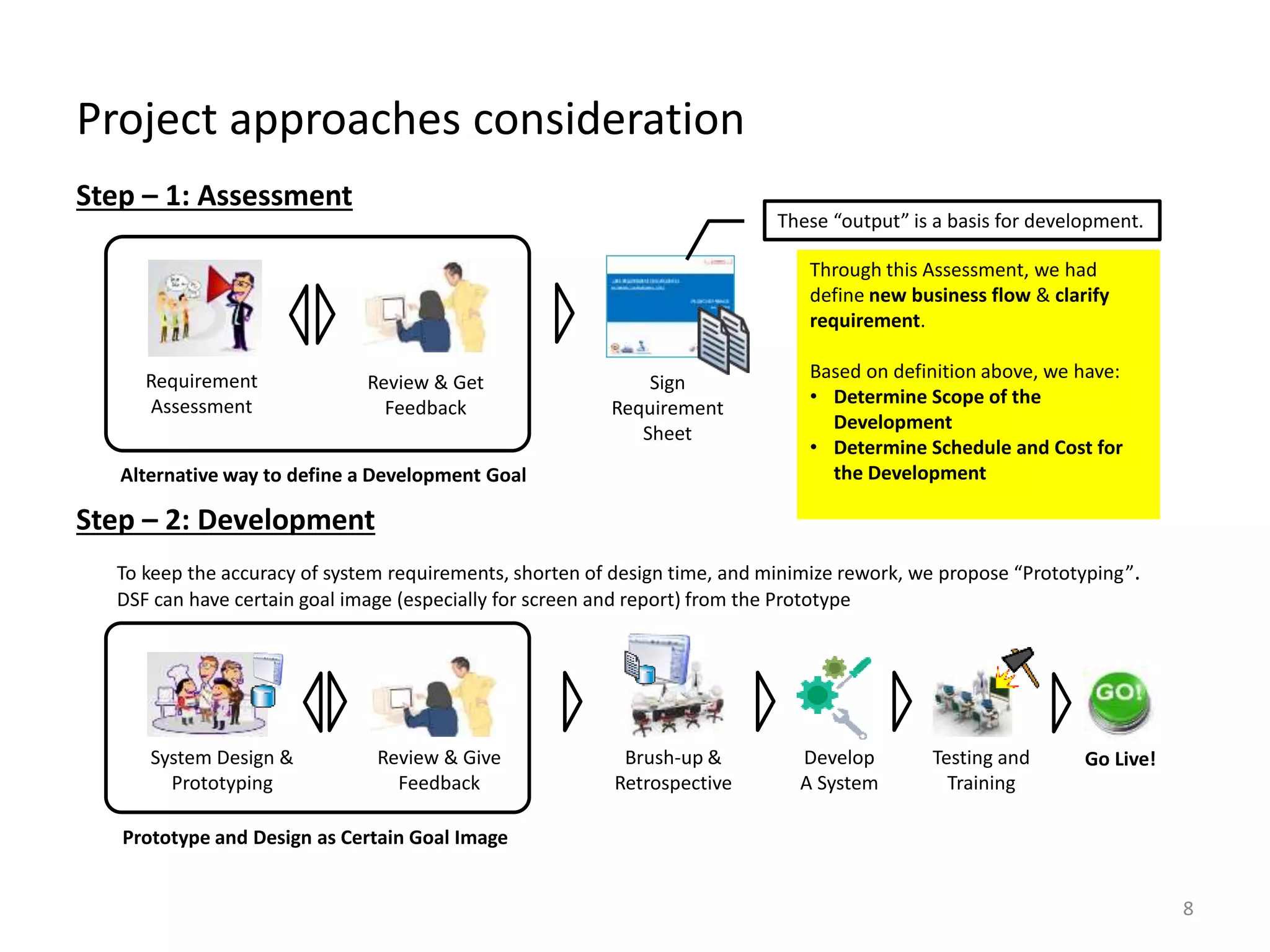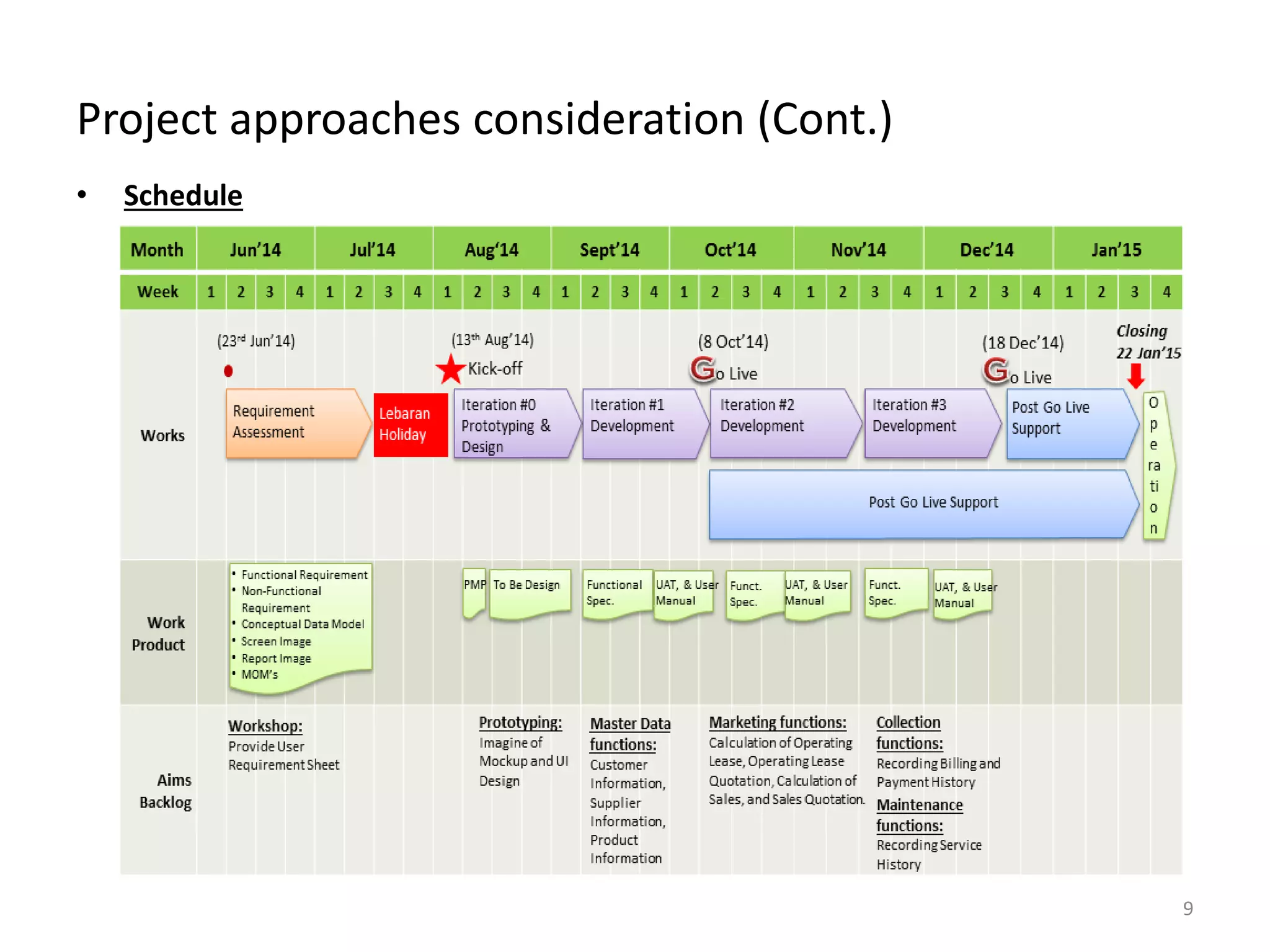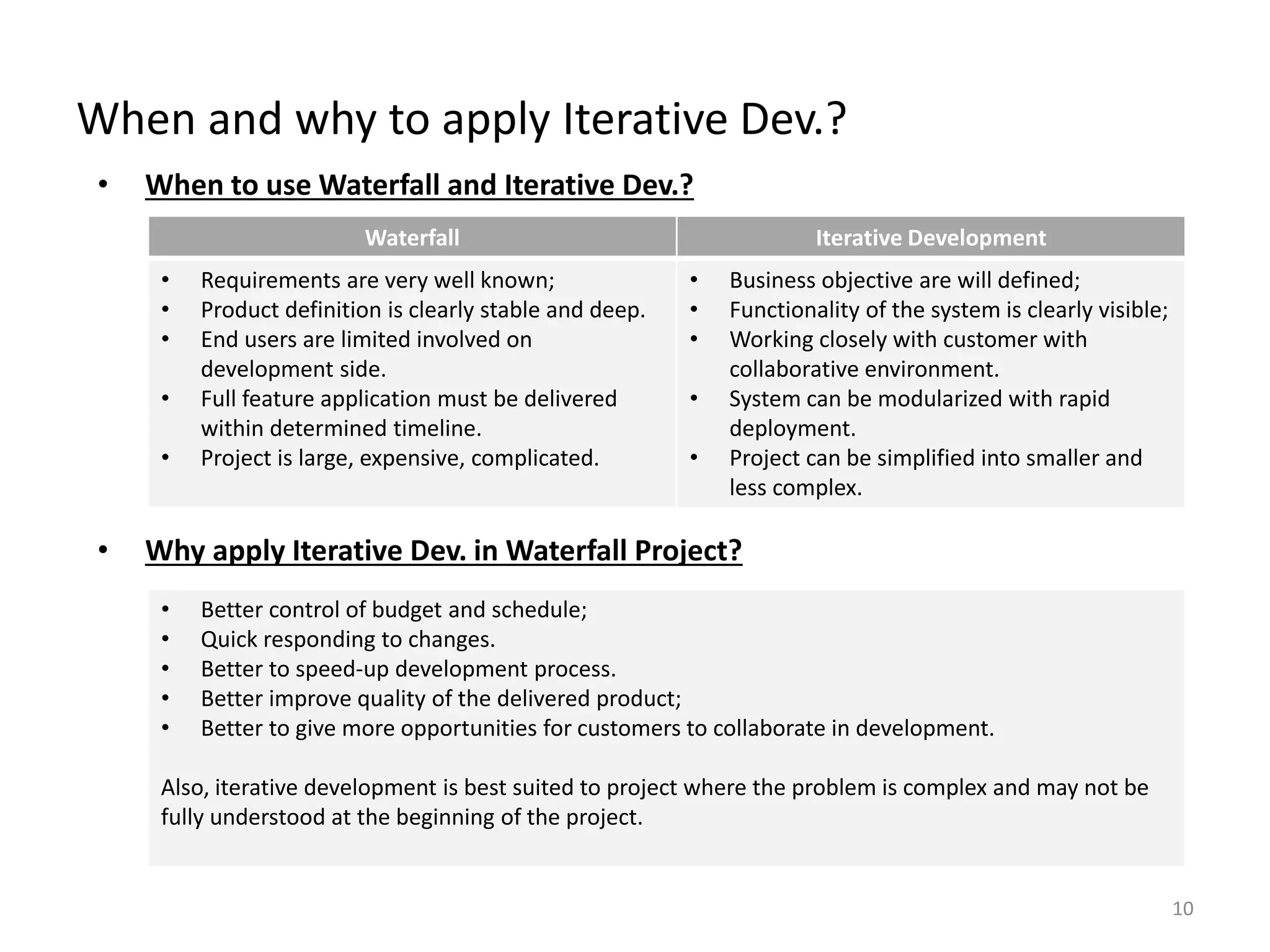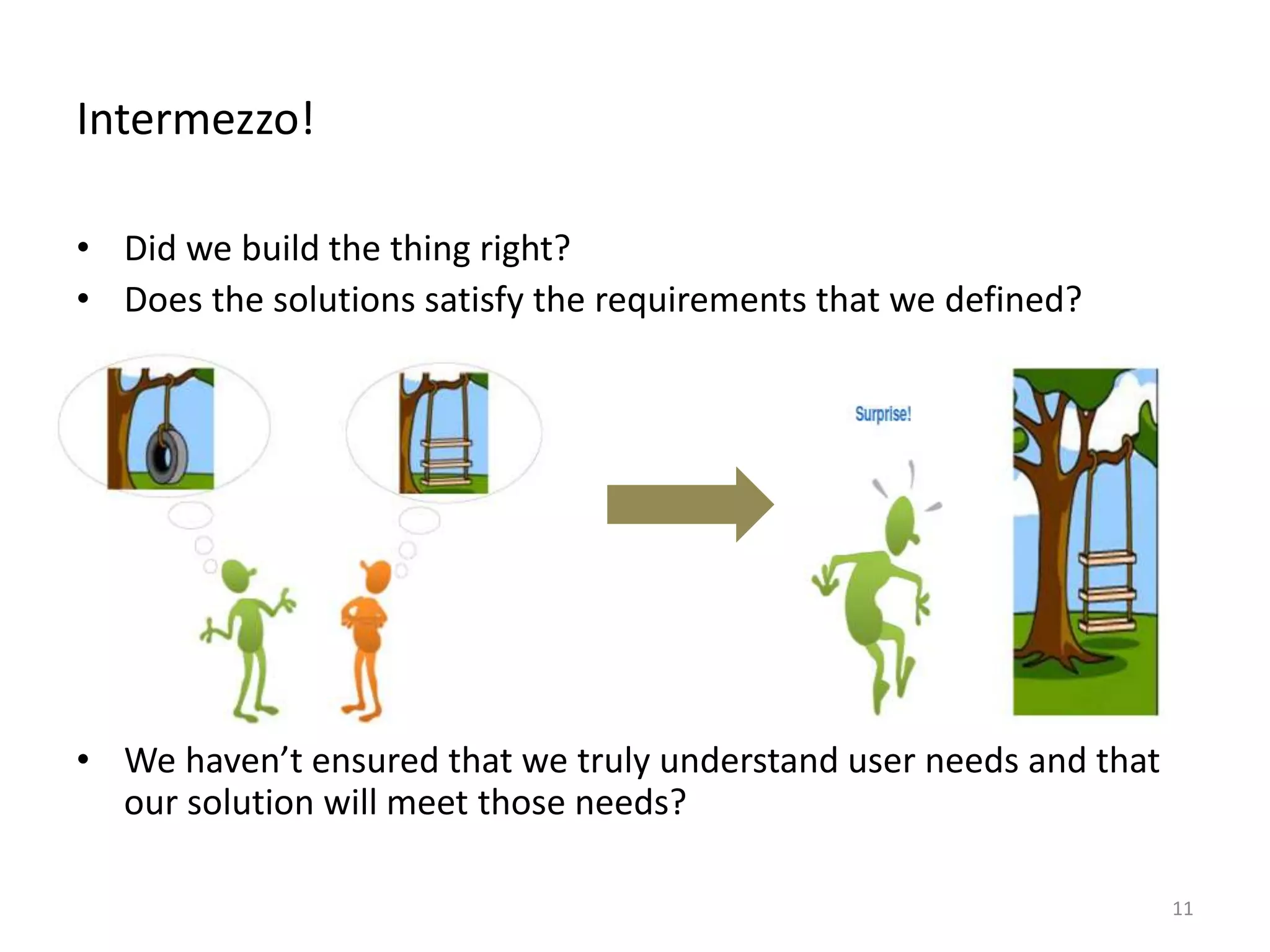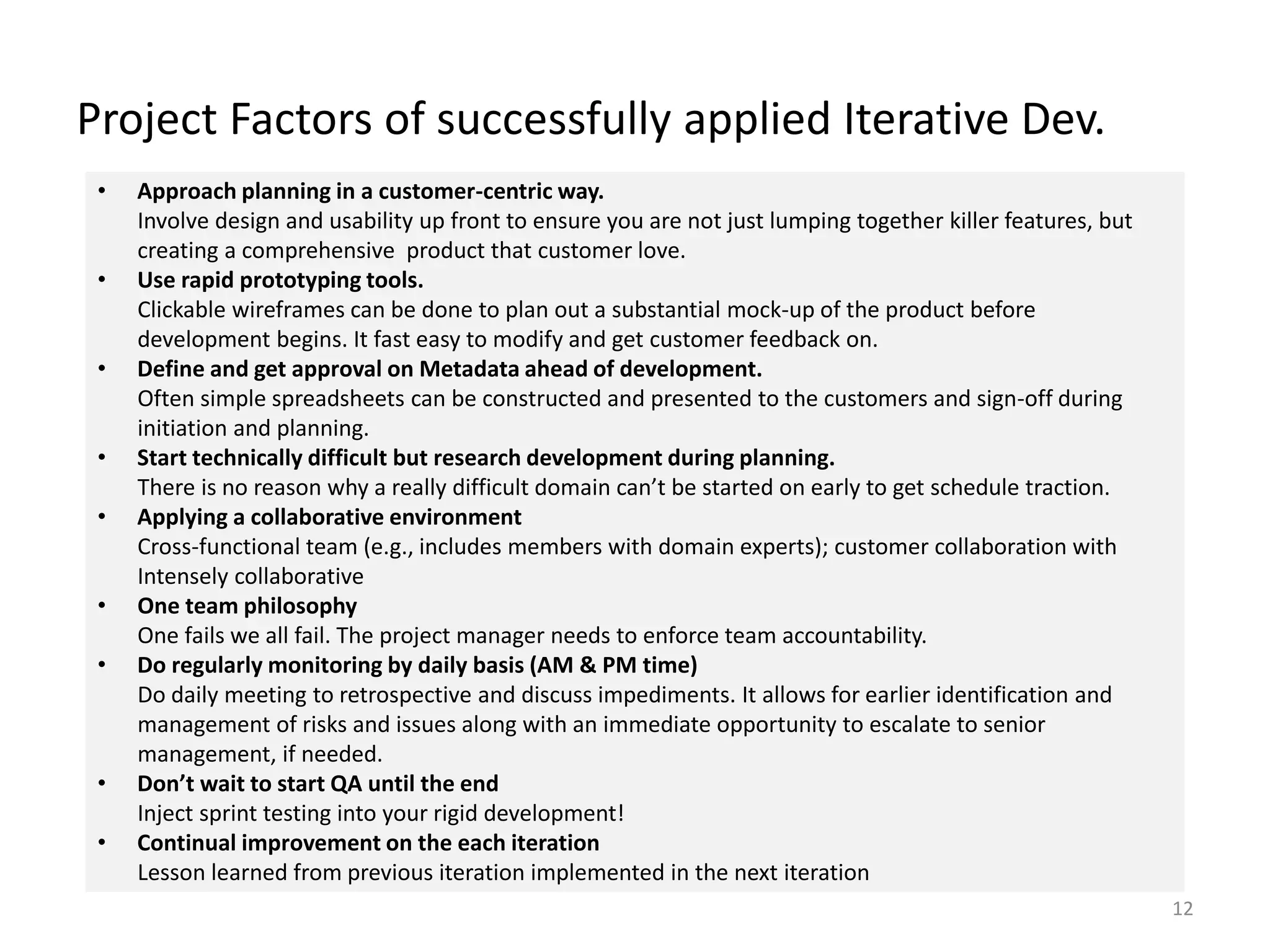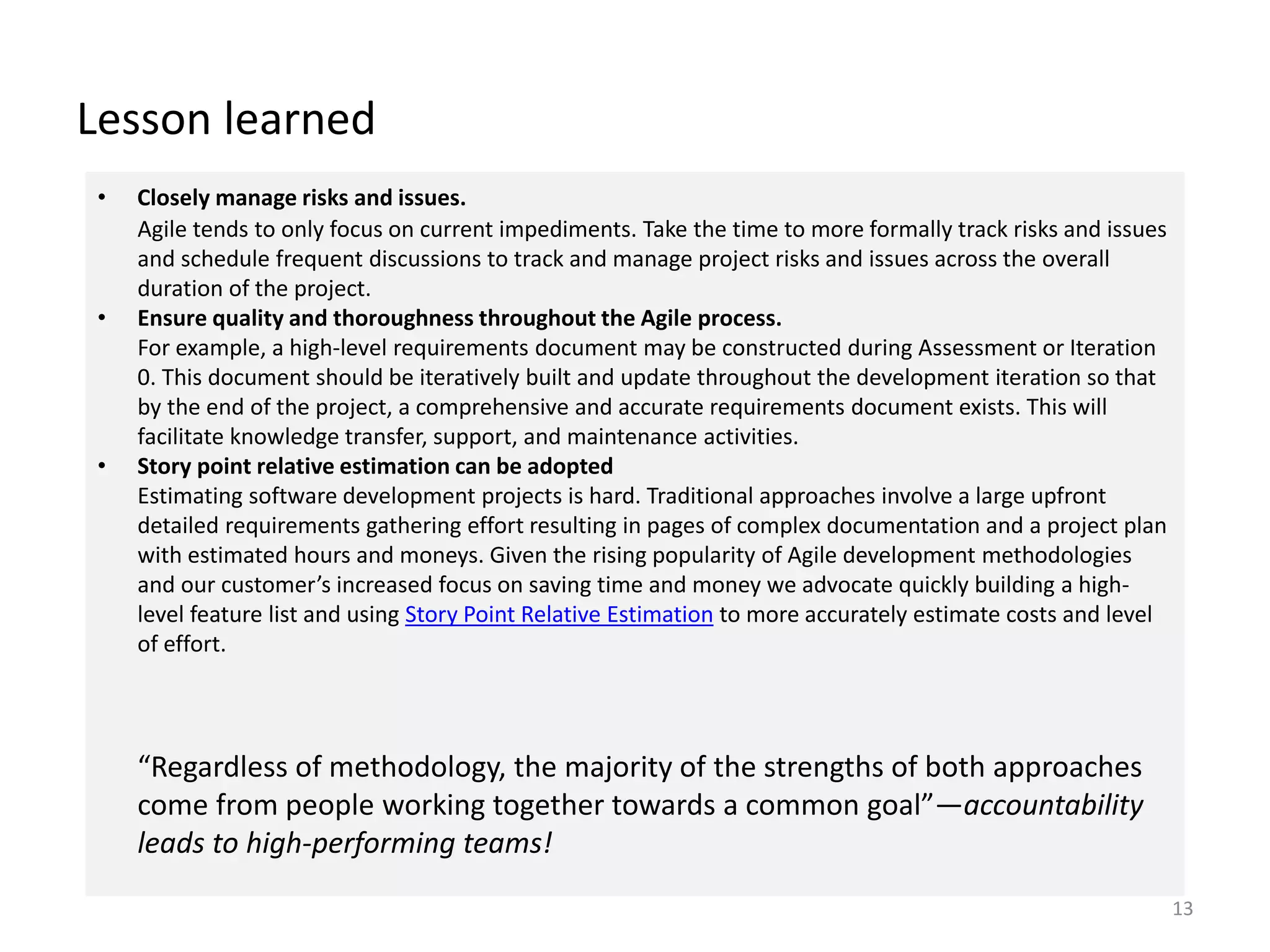This document discusses applying both waterfall and iterative development models to a project to develop a tool with minimum functionality in a short time for an operating lease business. It identifies challenges of growing business needs, lack of standardized processes and manual data entry. An assessment is proposed to clarify requirements and scope. Both waterfall and iterative development models are described. The document recommends using iterative development within the waterfall model to allow for prototyping, user feedback and flexibility to changes. Key success factors include collaborative teams, monitoring progress daily, and continual improvement between iterations. Lessons focus on managing risks, quality processes and using story point estimation.
